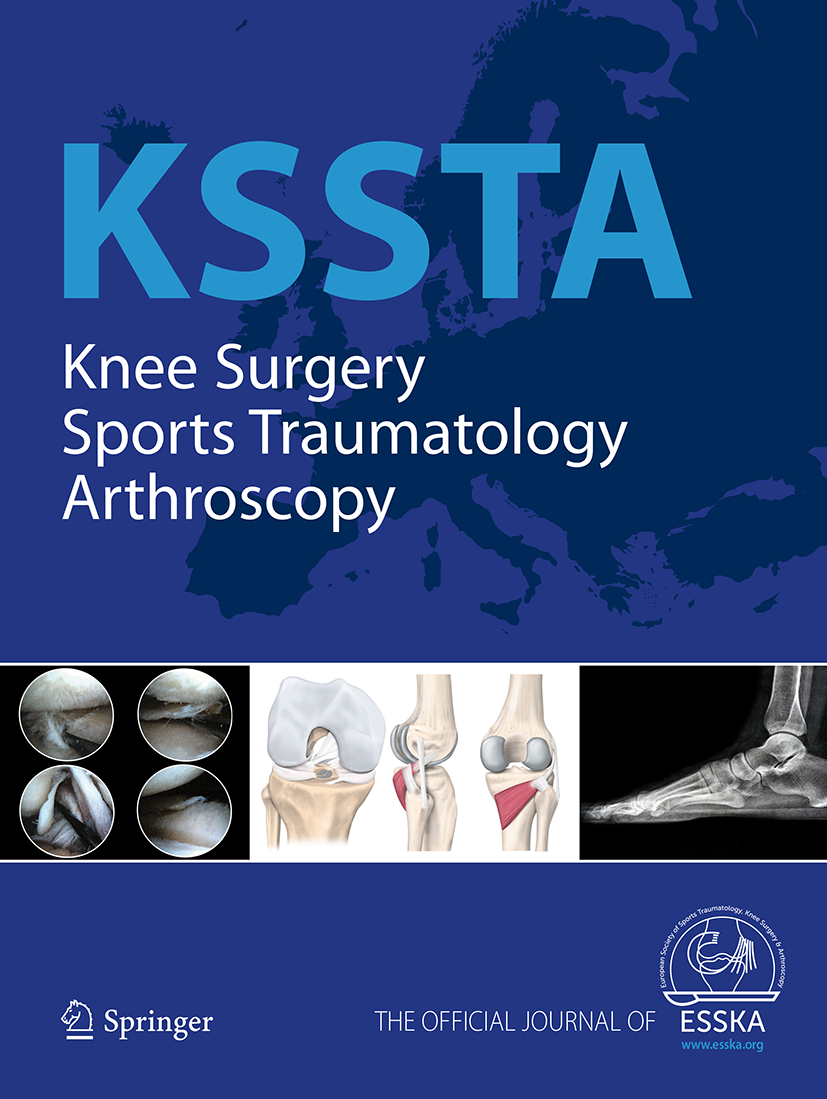
Novel arthroscopic fixation technique for SLAP lesions improves outcomes

Novel arthroscopic fixation technique for SLAP lesions improves outcomes
A new technique of arthroscopic fixation using double anchors for SLAP lesions
Knee Surg Sports Traumatol Arthrosc. 2012 Oct;20(10):1939-46. Epub 2011 Oct 18.Did you know you're eligible to earn 0.5 CME credits for reading this report? Click Here
Synopsis
28 patients with 29 shoulders undergoing arthroscopic repair for a type-II superior labrum anterior-posterior (SLAP) lesion were randomized to undergo a new fixation technique using double anchors or a conventional technique. The results after a one year follow-up suggest that the new fixation technique adequately restores the anatomical position of the SLAP lesion and provides improved short-term clinical and structural outcomes; including VAS pain and constant scores.
Was the allocation sequence adequately generated?
Was allocation adequately concealed?
Blinding Treatment Providers: Was knowledge of the allocated interventions adequately prevented?
Blinding Outcome Assessors: Was knowledge of the allocated interventions adequately prevented?
Blinding Patients: Was knowledge of the allocated interventions adequately prevented?
Was loss to follow-up (missing outcome data) infrequent?
Are reports of the study free of suggestion of selective outcome reporting?
Were outcomes objective, patient-important and assessed in a manner to limit bias (ie. duplicate assessors, Independent assessors)?
Was the sample size sufficiently large to assure a balance of prognosis and sufficiently large number of outcome events?
Was investigator expertise/experience with both treatment and control techniques likely the same (ie.were criteria for surgeon participation/expertise provided)?
Yes = 1
Uncertain = 0.5
Not Relevant = 0
No = 0
The Reporting Criteria Assessment evaluates the transparency with which authors report the methodological and trial characteristics of the trial within the publication. The assessment is divided into five categories which are presented below.
1/4
Randomization
3/4
Outcome Measurements
2/4
Inclusion / Exclusion
4/4
Therapy Description
4/4
Statistics
Detsky AS, Naylor CD, O'Rourke K, McGeer AJ, L'Abbé KA. J Clin Epidemiol. 1992;45:255-65
The Fragility Index is a tool that aids in the interpretation of significant findings, providing a measure of strength for a result. The Fragility Index represents the number of consecutive events that need to be added to a dichotomous outcome to make the finding no longer significant. A small number represents a weaker finding and a large number represents a stronger finding.
Why was this study needed now?
Repair of SLAP lesions constitutes from 5% to 16% of all arthroscopic shoulder procedures in large practice settings. Controversy exists regarding many aspects of SLAP lesions, such as the mechanism of injury, and regarding which techniques are best to diagnose and repair the lesion. Although the functional outcomes of SLAP surgery range from good to excellent in most patients, it has been reported that up to 55% of patients are unable to return to their prior level of activity. A novel surgical technique has been developed to provide a more anatomical reconstruction of the superior labrum on the glenoid rim using a double anchor. This study aimed to determine whether this new technique improves clinical and structural outcomes when compared to a conventional technique for SLAP lesion repair.
What was the principal research question?
Does a novel technique for SLAP lesion repair improve clinical and structural outcomes compared to a conventional technique in patients undergoing arthroscopic repair for a SLAP lesion when assessed 12 months after surgery?
What were the important findings?
- The patients in both the new technique and conventional technique groups experienced significant improvements in the ASES score, CSS, score, and VAS pain score by the 12 months follow-up (p<0.001).
- The patients who underwent the new fixation technique experienced significantly better ASES scores (p=0.04), CSS scores (p=0.03), and VAS pain scores (p=0.03) than the patients who underwent the conventional fixation technique by the 12 month follow-up. The significant difference was maintained by the final follow-up (p=0.03, p=0.01, p=0.04, respectively).
- Forward flexion and external rotation (90 degree abduction) were significantly better among the patients who underwent the new fixation technique at the 6 month (p=0.03 and p=0.03, respectively) and 12 month (p=0.04 and p=0.04, respectively) follow-ups, but the difference was no longer significant by the final follow-up.
- Complete labrum-to-bone healing was identified in all patients that underwent MRI study except for 1 patient who underwent the conventional fixation technique. 1 patients from the conventional technique group experienced partial detachment of the repaired superior labrum from the glenoid.
What should I remember most?
Patients who underwent the new fixation technique (anatomical double anchor repair) experienced significantly better Constant Scoring System scores, American Shoulder and Elbow Surgeons scores, visual analogue scale pain scores, and short-term range of motion scores than the patients who underwent the conventional fixation technique. The new fixation technique also resulted in complete labrum-to-bone healing.
How will this affect the care of my patients?
The use of this novel fixation technique for Type-II SLAP repair appears to significantly improve clinical and structural outcomes in patients with SLAP lesions when compared to the conventional fixation technique for Type-II SLAP repair. Further trials assessing long-term follow-ups and patient return to activities are need before superiority of one technique can be determined.
Learn about our AI Driven
High Impact Search Feature
Our AI driven High Impact metric calculates the impact an article will have by considering both the publishing journal and the content of the article itself. Built using the latest advances in natural language processing, OE High Impact predicts an article’s future number of citations better than impact factor alone.
Continue



 LOGIN
LOGIN

Join the Conversation
Please Login or Join to leave comments.